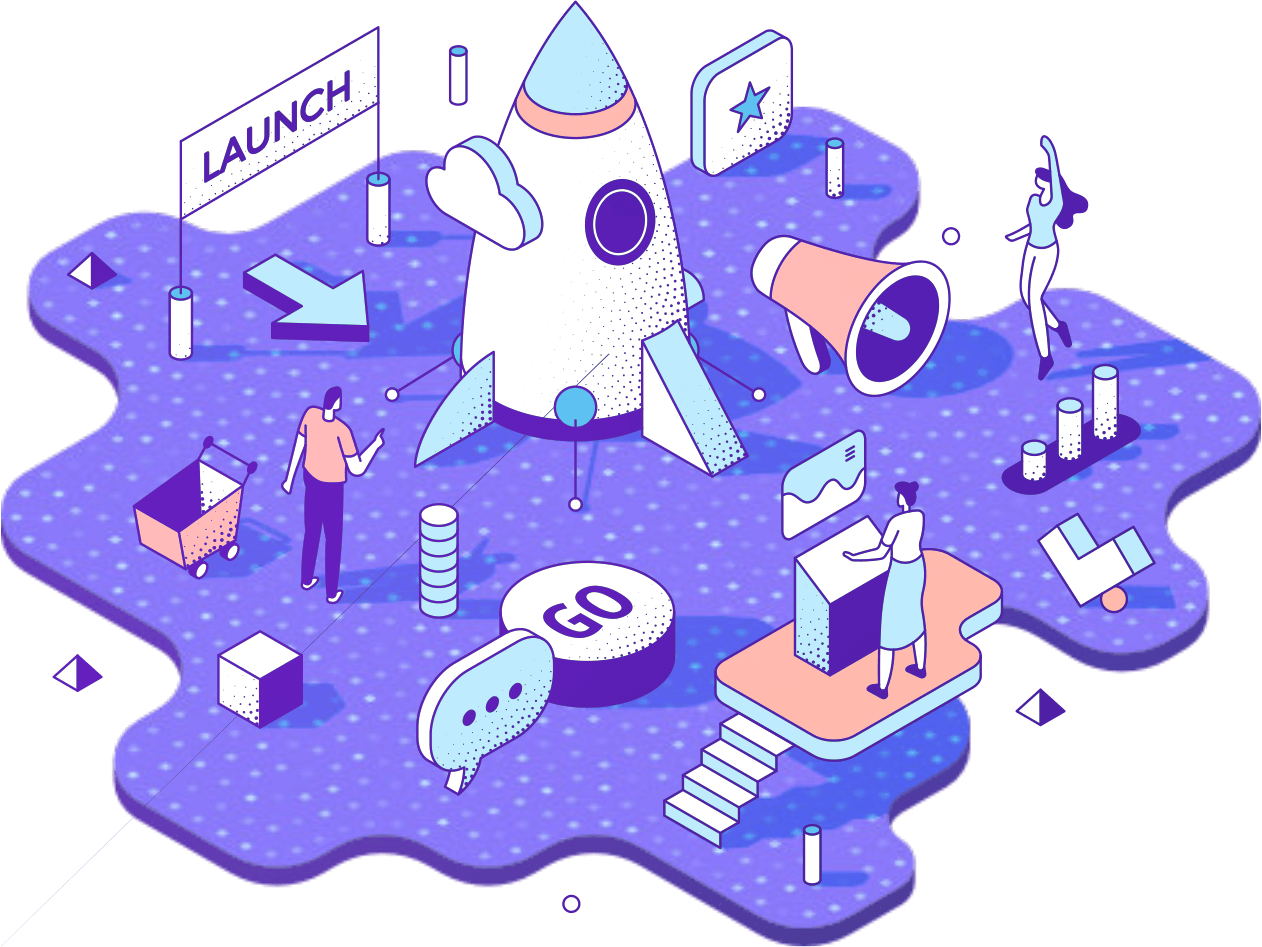The breakpoint is a rather common element of software development. Breakpoints are places in the code where execution stops and the output of the preceding instructions can be collected and verified, allowing the developer to debug and fix issues after important chunks of processing are done.
Our product development process emulates this in its structure. The end of each stage is marked by a major decision point (sign-off), with minor decisions taking place during the implementation of the step.
Defining the Minimum Viable Product
We’re an entrepreneurial company and we take great pride in that. During our initial discussion with you, our goal is to probe for a set of Problems your product needs to solve and the Solutions you have envisioned for them. We then take on the delicate role of assumption challenger and help you decide what combination of features would get you market-ready the fastest. This decision is not set in stone, but it helps structure the discussions that take place in the next step.
As a rule of thumb, any and all decisions made at the end of a step have one goal: to lead to better choices once the next step is over. We need this granular approach for two reasons:
- As a Client, you are more inclined to be interested in the Big Picture
- Our job is to build a product that closely matches what you want and to stress about the little things (so you don’t have to)
The former defocuses you from the little things, but we know from experience that many unimportant mistakes add up. In order to deliver on our promises, we have to account for that.
Deliverables include:
- General idea about the product
- Rough user description
- Outline of your go to market plan
- Estimated budget interval
- Discovery Process Quote
Decisions influence:
- Problem-Solution pair priorities
- Timeline of the following steps
Product Discovery
Our Product Discovery process is the result of over 16 years of work, client feedback and mistakes. During this phase we define what your product will look like, what features it will have and how they serve your future clients. Depending on the complexity of the project and the stakeholders involved in decision making, it can result in a larger or smaller number of supporting documents. However, we consider the 4 of them mandatory.
The process aims to improve budget estimation accuracy, bind milestones and deliverables to clear evaluation criteria, make handovers easier and serve as the basis for a Request for Proposal when needed. Due to many requests from clients with in-house development teams, this process can be purchased as a standalone solution at a fixed fee.
Deliverables include:
- User stories & Acceptance Criteria
- Wireframes
- Tech Stack Recommendations
Decisions influence:
- Review of MVP assumptions
- Assessment of product complexity
- Contents of the binding quote
- Timeline of the following steps
Project Planning & Setup
If during discovery we broke the product into manageable pieces, the planning phase takes them one step further and splits them into smaller chunks (tasks) and plots them over a period of time. This provides a good opportunity for us to mold the timeline to your go-to market plans and schedule demos/ important meetings around your availability.
Deliverables include:
- Work Breakdown Structure
- Time plan in the form of a Gantt chart with project milestones
Decisions influence:
- Efficiency
- Timeline of the following steps
Interface Design
Our team is best equipped to transform wireframes and user stories into a beautiful, interactive design; however, we do rely on your brand book (if available) to make them consistent with your visual identity. If no brand book is provided, we will provide you with some guidelines and requirements.
Deliverables include:
- Screen designs
- Design requirements & Proposed visual scheme (when no brand book is available)
Decisions influence:
- Front-end work complexity
- QA testing effort
- Accessibility Standards Compliance
- Compliance with your users’ device preferences
- Timeline of the following steps
Front-end & Back-end Development
This stage is the most time consuming. As the steps progress, their output is increasingly less conceptual: from verbal descriptions of features, to visual representations and, finally, to interactive screens (for front-end) or complex logic systems (back-end).
Deliverables include:
- Interactive screens
- Admin panel
- Infrastructure setup
- Go-live plan (updated)
Decisions influence:
- The number of features to be added after launch
- What platforms the product will be optimized for first (e.g. Mobile vs Desktop, Chrome vs Edge etc)
QA Testing
Our QA team, together with the project manager and lead developer assigned to the project, will assist you in choosing the proper testing strategy (manual, automated or a combination of the two) to ensure we catch as many issues as possible within the given time and budget.
Deliverables include:
- Testing plan
- Known bugs (non-critical issues that can be fixed after going live)
- Go-live plan (updated)
Decisions influence:
- Priorities of the various issue types
- Launch date
Long-term commitment
If your product is crucial to your business (or it is your business), we will recommend a bespoke maintenance plan. This usually covers major issues that would otherwise impact your clients (e.g.: security updates) and a long-term development plan. We will also assign a permanent team to your project so that domain-level knowledge is always up to spec. We have been engaged in long-term contracts with companies in a great number of industries (e.g.: Gaming Media, Conference Room Reservations, Construction, Travel and more).
Deliverables include:
- Maintenance plan
Decisions influence:
- Speed of new feature development
- Product security compliance


